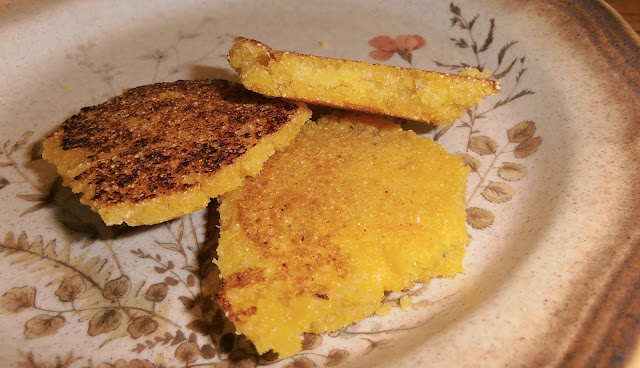Chocolate chips. Lovely little morsels of semi-sweet chocolate that are so easy to eat by themselves and make amazing fudge and cookies. But, it turns out, they are also very versatile in other recipes. This book,
In The Chips, was published in 1985 by Peggy Mellody and Linda Rosenbloom.
 |
| ISBN: 0-89256-288-9 |
It has sections on breads, cakes, candy, cookies, desserts like cheesecake and tortes, pies, beverages, and a special section just for Christmas goodies.
In that dessert section I found a recipe called "Easy Chocolate Pots de Crème" which was exactly what I needed for a quick yet scrumptious dessert for a special dinner guest. It also fit the description of what I needed for a later-in-the-week dessert I was to take to dinner at a friend's house: "a small chocolate something."
What was appealing about the recipe was the simplicity, that it could be made in advance, and that it was set up with small, individual servings.
Easy Chocolate Pots de Crème (pg 168)
1 1/4 cups light cream
1 cup semi-sweet chocolate chips
2 egg yolks, at room temperature
3 tablespoons brandy

Scald light cream in a small heavy saucepan over medium-low heat. Meanwhile, combine the chocolate chips, egg yolks, and brandy in a blender. Pour scalded cream into blender, and blend until chocolate is melted and smooth. Pour mixture into crème pots or demitasse cups. Cover and chill for at least three hours.
Note: Dark rum or liqueurs may be substituted for brandy if desired.
My Notes
I used half-and-half for my light cream. For the first time I made it, I used the three tablespoons of brandy. The second time I used three tablespoons of brandy-flavoring as the friend does not use alcohol at all.
I wasn't exactly sure what the requirements were for scalding so a quick trip to
The Joy of Cooking helped me out. The original idea for scalding was to kill off germs but we don't need that with pasteurized milk products. In this case it was to get the cream hot enough to melt the chocolate and lightly cook the yolks. So the J of C book said to heat it until small bubbles appeared around the edges of the pan.
 |
| Bubbles from pouring in the cream |
 |
| Bubbles at scalding |
So while the cream was getting scalded, I put the other ingredients into the blender.
Once I added the cream, I clamped on the blender's lid and started the blender. Big mistake! The hot liquid quickly expanded and, despite my best (desperate) efforts, lifted the lid and squirted out. My face, glasses, hair, shirt, and parts of the kitchen were drenched with warm, sticky chocolate mix! Not hot enough to burn but very startling.
As it turned out the splash was more droplets than fountain, so I didn't lose too much to make the dessert. But I did have to wash up afterwards and change my shirt.
The second time I made it I put the mixture into my food processor. This time only a little liquid squirted out and, fortunately, not on me.

In both cases I blended until the mixture was evenly brown throughout. This made it foamy but not in a bad way.

Then I poured the mixture into six individual glass bowls, covered them each with plastic wrap, and put them into the refrigerator.

In both attempts the pots de crème was firmly set up after about three hours of chilling. I served it with a dab of whipped cream on top.
The Verdict
I loved it. The foam firmed up on top and underneath was a very pudding-like chocolate dessert. The whipped cream was a good touch although I am a big fan of lots of whipped cream with pudding.

The texture was smooth, the flavor was chocolate without being very sweet (notice: no extra sugar added!), and I liked the brandy undertones. I even liked the brandy flavoring undertones.
Guest taster reactions were mixed. Everyone ate it but I did not sense that many were impressed or excited about it. It was a small portion, as intended, so maybe it would have been better to serve some thin vanilla cookies with it.
So I would call it a success but maybe only to pudding fans. It certainly was light while being rich enough to satisfy chocolate cravings.
I would make it again but maybe just for myself!




















































